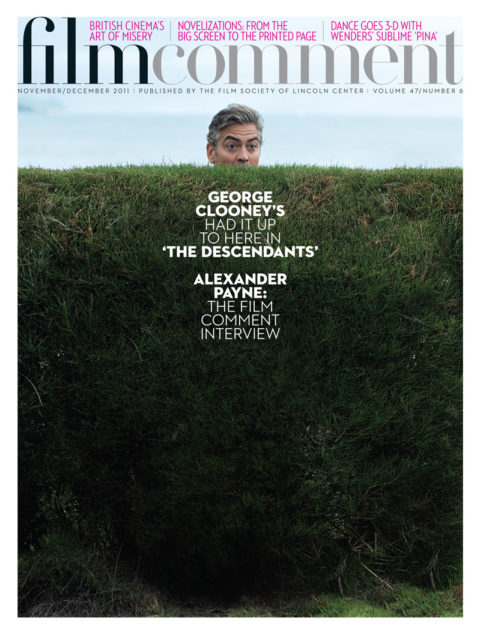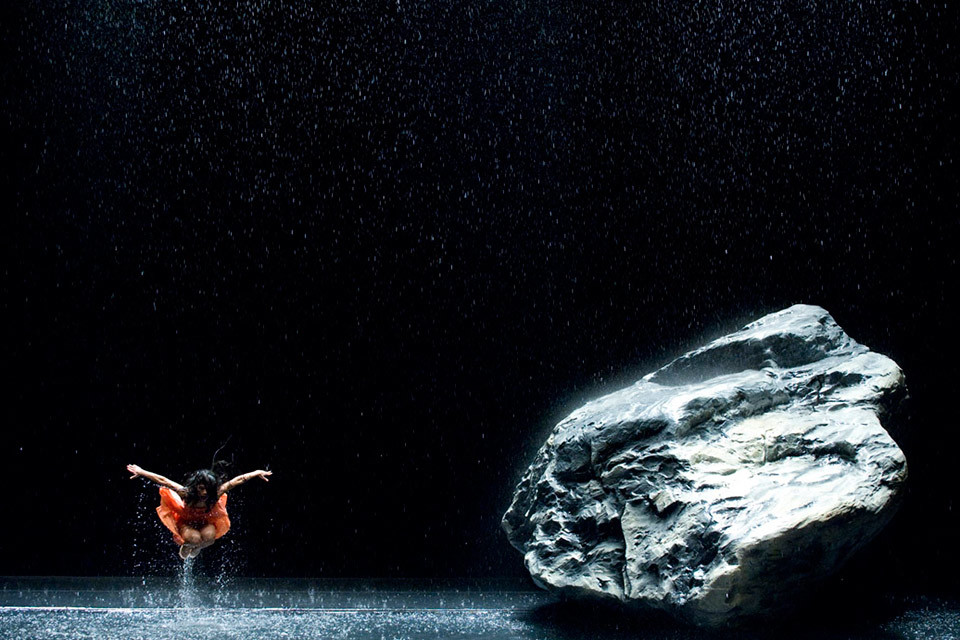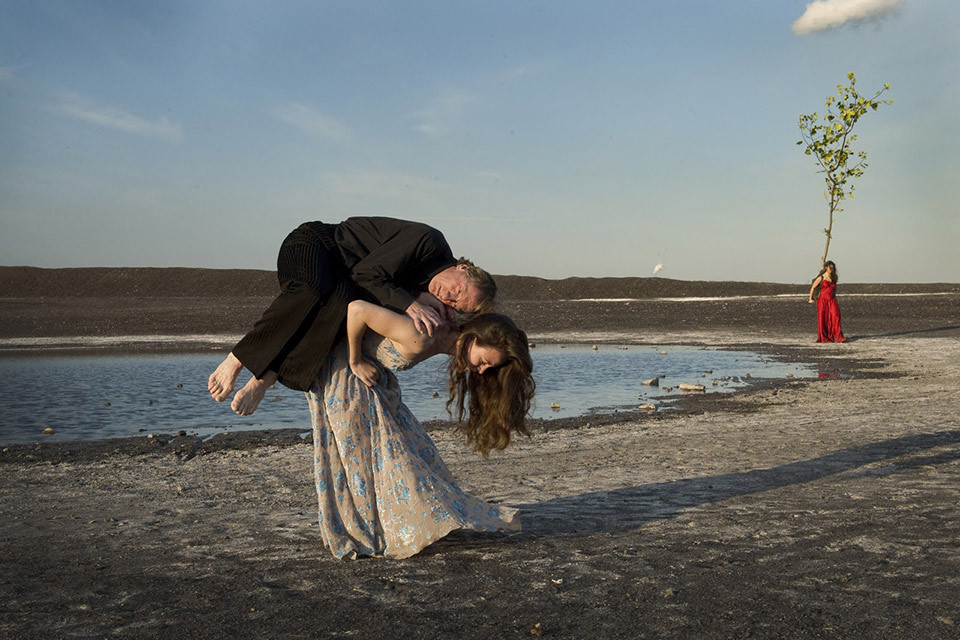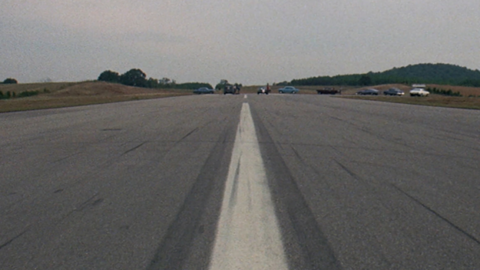
Pina: The Center of the World
Wim Wenders first saw Pina Bausch in 1985 and followed her career from that point on. They became friends and considered collaborating. But it wasn’t until digital 3-D cinema was perfected that Wenders saw how he might capture her performances. The two artists began discussions in 2008, and Bausch then chose four works to present with members of her Tanztheater Wuppertal. The first rehearsal was scheduled for July 2, 2009; on June 29, without warning, Bausch died.

Pina, the film that Wenders produced and directed, is not the film that he and Bausch would have made together. It is, instead, an homage—an attempt to show what she and her work meant to those closest to her, and to remind viewers of her mastery. After a long interval of grieving, Wenders met with Tanztheater Wuppertal’s artistic directors, Dominique Mercy and Robert Sturm; Bausch’s set designer, Peter Pabst; Pina’s dancers; and representatives of the city of Wuppertal. Together they have made a beautiful, rich, and moving film.
Many recent 3-D movies, or ones reformatted in 3-D, have tended to present stomach-jolting journeys into space, engineer fantastic adventures, or test the possibilities for scaring the hell out of audiences. Wenders’s idea was to bring spectators into the dance, and he often set his two-camera apparatus among the performers (undoubtedly hair-raising for all concerned). The images of depth and proximity are often acute. Sometimes when dancers move in the foreground—huge, cut off below the waist—it’s as if we’re looking through a window into a room. At one point, a performer advances toward the camera, and a man’s arm—seemingly from in back of us—reaches toward her. (It’s all you can do to not turn in your seat and look over your shoulder.)

Pina
For the most part, however, Wenders avoids 3-D trickery, thereby facilitating smooth transitions between scenes that he shot, and archival footage showing Bausch rehearsing her company or performing years ago in her Café Müller. The intimacy of 3-D engenders one slight problem. In an expertly shot, sensitively edited standard film of a performance, the necessary cuts from a relative close-up to a long shot don’t jolt our perception. But to go from a three-dimensional, extreme close-up to a distanced view of the same scene can be momentarily disorienting.
The four dances that Bausch revived for live performance, and for Wenders’s camera, span her career: Rite of Spring (75), Café Müller (78), Kontakthof (78), and Vollmund (06). They are among her best pieces and are quite different from one another. None is shown in its entirety. Rite is a ferocious ritual dance, set to Igor Stravinsky’s pounding, dissonant 1913 score. Bausch’s hordes of barefoot men and women stamp and scuffle and fall on a terrain of peat that gradually stains both their skin and the women’s simple dresses. Wenders’s choice of perspective powerfully emphasizes the ceremonial choice of the one woman to be sacrificed. One by one, women advance on the male leader, and we see them through his eyes—each holding out the symbolic red garment, each terrified in her own way.
Café Müller, on the other hand, takes place in an all-white set that might be a large, airy restaurant, empty of food and servers; a small cast comes and goes through a shifting obstacle course of tables and chairs. The locale for Kontakthof is a barren hall with walls on three sides, a little unused stage at one end, and some folding chairs. It’s a place where women and men, dressed in their best, come to meet. The sets for these early pieces are by Rolf Borzik, Bausch’s colleague (and husband) until his death in 1980. Peter Pabst, who subsequently took over the position of set designer, created an enigmatic outdoor atmosphere for Vollmund. The floor is black, with a nearly invisible shallow pool of water near the back. To one side stands an enormous rock that the full moon of the title has painted a permanent silver.

Pina
Repetition is a favorite Bausch device. Certain actions are performed over and over, until—perhaps sped up and increasing in violence—they become ordeals. One powerful example from Café Müller appears in the film. A man (Michael Strecker) enters, carefully pries apart an embracing couple (Aida Vainieri and Mercy), arranges Mercy’s arms, lifts Vainieri, places her in them, and exits. After a moment, Mercy drops his arms, and Vainieri falls; she scrambles up and hugs Mercy again. This sequence is repeated again and again, faster and faster. By the end, Mercy is mindlessly dropping his partner, as she tries to clamber back into his arms at a frantic speed.
In another example of repetition, Bausch’s dancers frequently recount stories that she drew from them or answer questions that she posed in rehearsal. Wenders’s Pina breaks up performance footage with a similar device. In very brief interludes, individual dancers gaze intently into the camera, while, in voiceovers and their own native languages, they relate something they cherished about working with Bausch, or recall words she once said that have lodged in their memories. The center of their world is gone, and you sense their loss. Andrey Berezin tells us that, “we become the paint to color her images.” Lutz Förster remembers that as he was leaving the studio after a bad rehearsal, he turned back, and Pina said to him: “You have to scare me.” Also, we see each dancer perform an excerpt (perhaps a favorite) from an unidentified work. Jorge Puerta Armenta, for instance, is seen in a moment from the 2007 Bamboo Blues; other men balance tree branches, one after another, on his arms and shoulders as he walks steadily along. Bausch was fastidious about the tiniest detail. In an early interview, embedded in Pina, she speaks about her role in Café Müller; keeping her eyes down behind closed lids, she explains, or centering them, made a great difference in how she performed. Her performers are equally invested in each vital second.
Some of Bausch’s approximately 44 dances investigate city life—including, in recent years, specific cities where Tanztheater Wuppertal performed—while others acknowledge nature and the outdoors. Wuppertal, in northwest Germany, not far from Bausch’s birthplace, is an industrial city that is also rich in parks, fields, woods, and hills. So Wenders takes his camera not only into the theater and the studio but out into the surrounding city: dancers perform on a green slope, a traffic island, beside an indoor swimming pool, in one of the city’s red monorail cars as it speeds along its track, on a station platform. Rainer Behr dances on the edge of what appears to be an immense excavation. Poker-faced, Cristiana Morganti bourrées on pointe on a flat gray rooftop, framed and hemmed in by bleak, industrial buildings. While a tango plays, Mercy, in a long white tutu, executes slow pliés on a cart that travels over a track in a tunnel; each time he falls, it moves forward. And Josephine Ann Endicott romances the fake hippopotamus from the 1979 Arien in the middle of a river.

Pina
The camerawork and editing sensitively emphasize aspects of each scene. In Café Müller, where a man keeps rushing about to toss chairs out of the path of a woman whose eyes are closed, the film’s time-space rhythm is sometimes agitated, sometimes wandering, as if the camera crew, too, were threading its way around obstacles, while still conveying the site’s sense of emptiness. In a Kontakthof sequence, men gradually gather around Nazareth Panadero, their at-first-experimental patting and poking and manipulating of the inert woman becoming increasingly punitive. Wenders stays on this scene in medium close-up, and the enthusiastic men finally fill the frame, suggesting insects feeding off a host.
Toward the end of her life, Bausch supervised two additional reincarnations of Kontakhof. In 2000, it was staged with men and women aged 65 and over, and in 2008 with teenagers—some as young as 14 (the process of rehearsing the latter was captured in Anne Linsel’s marvelous 2010 film Dancing Dreams). Through a series of subtle dissolves and cuts, Wenders blends the three age groups; we seem to see an entire society grow up and look back on its citizens’ youth. A thin, coltish, fair-haired girl, walking alone toward us, reaches the front of the hope-filled space, and turns to look back. When she faces us again, she has become Tanztheater Wuppertal’s Julie Shanahan, also blonde, wearing an identical crimson silk dress.
Near the beginning of the film, Förster leads the dancers in a long procession around the theater’s stage—all of them repeating four gestures that stand for spring, summer, autumn, and winter. Later, the parade winds down an outdoor staircase. At the end, the performers move into the distance on a man-made ridge guarded by a line of totemic sculptures. We see Pina’s words: “Dance, dance, otherwise we are lost.” They bear her heritage.







